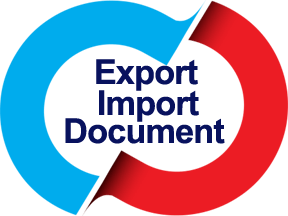How to Distinguish Sight L/C and Usance L/C | types Of Letter Of Credit
Hello all, Till now I was shared with you 3 important topics about the letter of credit which is a very important payment document for the export-import business. Today we will learn about How to Distinguish Sight L/C and Usance L/C | types Of Letter Of Credit before that read our last Topic –
- What Is Letter Of Credit ( L/C) | Export Import Document for Payment term
- Step for Opening Letter Of Credit L / C | Export Import Document Payment
- BACK to Back Letters of Credit (BB L / C) Transactions | Export-Import Doc
Now today we will try to understand How to Distinguish Sight L/C and Usance L/C | types Of Letter Of Credit and main process of both.
L / C is a building. An L / C is a type that can be seen from the clauses in the body of the L / C building. And the “material” for building L / C are the points of agreement between the seller and the buyer as outlined in SALES CONTRACT .
But it should be underlined, L / C is completely separate from the sales contract. UCPDC 600 Article 4 has confirmed that: “A credit by its nature is a separate transaction from the sale or another contract on which it may be based.
Judging from the type of tenor (payment term), L / C is in the form of sight L / C and usance L / C. What are they like, let’s check it out …
When the payment of
sight L / C – sight Letter of Credit
L / C that requires payment must be made by the buyer (applicant/importer) – through the issuing bank – once documents sent by the seller (beneficiary/exporter) are shown to the issuing bank. The issuing bank has a maximum of 5 working days after the document is received to declare the document clean (in accordance with L / C requirements) or there is a discrepancy. If a clean or complying presentation, payment must be made a maximum of 5 working days.
An indication of the sight L / C can be seen in Field 42C in the L / C which reads: “ Draft at sight for 100 percent invoice value “.
Usance L / C – Usance Letter of Credit
L / C stating payment is made by the importer maximum on the due date, which is determined several days after the date of shipment of the goods by the exporter. The delivery date is seen from the date ” on board ” on the bill of lading (B / L) if using a ship, or airway bill (AWB) if using a plane.
An indication of usance L / C can be seen in Field 42C in the L / C that reads: ” Draft at usance 60 days after B / L date for 100 percent of invoice value “.
L / C opening process – Letter Of Credit
Let’s step back to the L / C opening process. In principle, importers who want to open L / C must submit funds in advance to the issuing bank as collateral, in the amount of the L / C opened. Why? Because L / Cs are payment instruments guaranteed by banks, banks need to ‘secure’ funds from importers first.
L / C sight
In general practice, the importer who is a genuine customer at a bank submits funds in the amount of the L / C he opens as collateral for the L / C he opens. The funds are deposited by the issuing bank in a Marginal Deposit (MD) account and will be debited to be paid to exporters after the documents are received and the conditions are clean ( complying presentation ).
Now try to move more deep in our topic –How to Distinguish Sight L/C and Usance L/C | types Of Letter Of Credit
Usance L / C
Generally, usance L / Cs are opened by importers who are debtors at banks and get import facilities. The import facility can take the form of a ceiling opening for L / C, disposition for opening the L / C using working capital credit, and the obligation to deposit an incomplete deposit (for example, only 10%, the rest is paid on the due date).
Customers like this can also open sight L / C. At the time of opening the L / C he deposits a Marginal Deposit of 10% of the value of the opened L / C. He paid 90% after the documents from the exporter arrived in a clean condition.
Delivery of sight L / C items
Importers can collect goods at the port of destination after the Export-Import documents are shown to the issuing bank in a clean condition, in accordance with L / C requirements. in this situation, it means that the issuing bank has also made payments to exporters. The issuing bank submits B / L to redeem goods at the port and other original documents to the importer.
Usance L / C
After the export-import document is received, the issuing bank waits for approval (acceptance) from the importer that the importer receives the document with the existing conditions. If the condition is clean, the acceptor of the importer must have obtained an issuing bank to conform to the nominated bank (bank of the beneficiary/exporter) within a maximum of 5 working days after the issuing bank documents are received.
If the document contains discrepancy(deviation from the L / C requirements), but the importer is willing to accept the condition, then the acceptance of the nominated bank is given by the issuing bank after receiving the waiver of discrepancy from the importer, which means the importer is willing to pay for the L / C even though the document contains discrepancy .
Acceptance given by issuing bank to nominated bank is an agreement to pay L / C at maturity, as well as a commitment that reflects the guarantee of issuing bank to pay.
After that, the issuing bank releases the B / L Bill of Landing and other original export import documents to the importer to take the goods at the port.
From the description above, we can see that the sight L / C is more beneficial for the exporter. This is because he received payments directly once the documents he showed to the issuing bank were received.
Meanwhile, with the usance L / C, the payment is only received by the exporter on the due date. Can be 30, 60, 90, 120, 150, 180 days after the date of Bill of landing B / L, depending on the agreement of exporters and importers.
However, in practice exporters can receive payment before importers make payments, namely, by negotiating or expropriating export bills by nominated banks, for sight L / C. Whereas for usance L / C the exporter can receive a discount. The compensation is, of course, exporters being charged with transit interest, discounted interest, Porto and telex.
Read Our Other Startup Export Import Business Document Articles –
- How a startup can start export business in India in 2019-20 |Export Import
- How can i export Fresh onion as Merchant Farmer Exporter | Export Onion
- What Is Letter Of Credit ( L/C) | Export Import Document for Payment term
- How to Start Export business of Spices |Organic Spices & Raw Spice India
- How to Do Export Antique Handicraft & Handmade Craft Product from India
- Imitation Jewelry Artificial Jewelry Export Business |Export Import business
- How to Start Meat & Processed Meat Export Business in india | Export Meat
- How to Start Readymade Garments & Textile Export Business From India
- how to start import export business in India & export Documents
- How to select a profit product for new Export Business Export Product
- Document for Export Food product Meat Honey Rice Agriculture from India
- 3 way to find international buyer for Indian export product search buyer
- 7 Steps to Success in export business as start up exporter from India
- 8 Criteria’s for Selection of Product for Export Import Business From India
- Importance of The Export Import Business To Global International market
- 5 Tips step how to Choose the Right Name for Your import Export Business
- 10 Reason to start Your Export Business Reason for Start Export Business
- 10 Step to Develop A Export Strategy Plan ? How to Start Export Business
- 9 tips how to Develop Export Import Business Marketing Plan | Start Export
- Import Export Certificate | IEC CodeDocument for Start Export Import Biz
- 15+ Top Export Country for India 2019 | Export Import Business Document
- 5 step to Start Cashew Nuts Export Business In India with Top Import buyer

